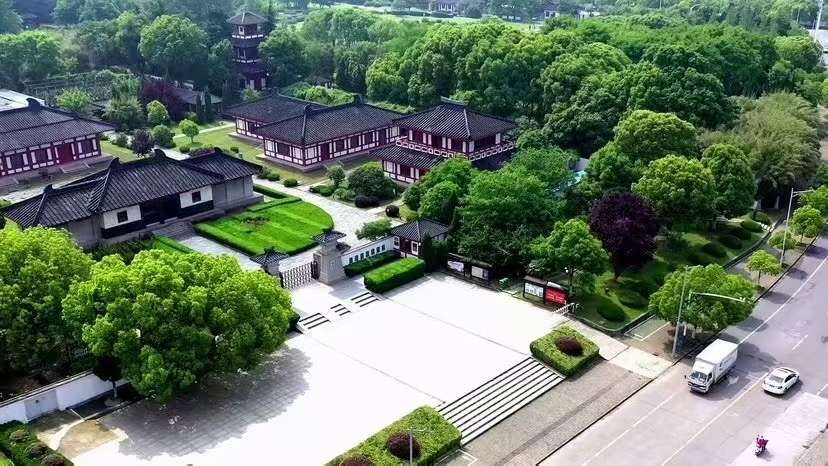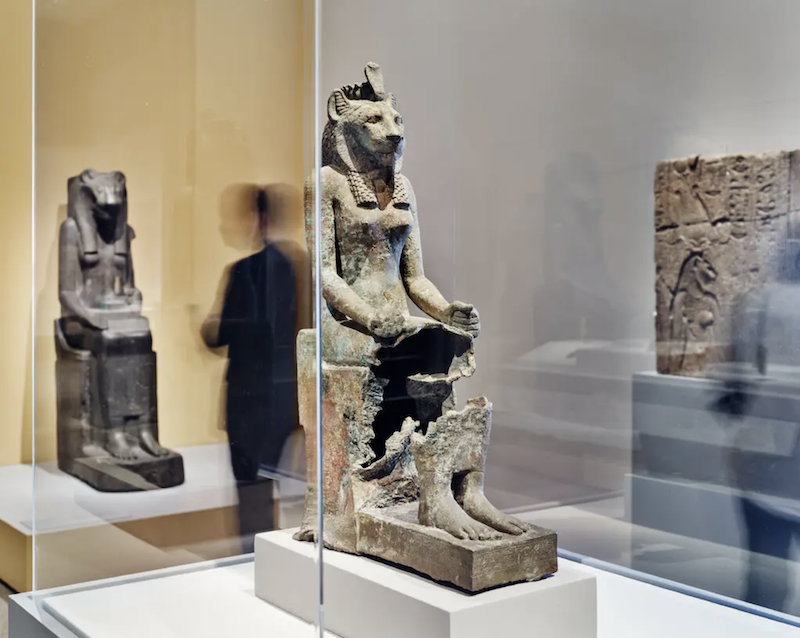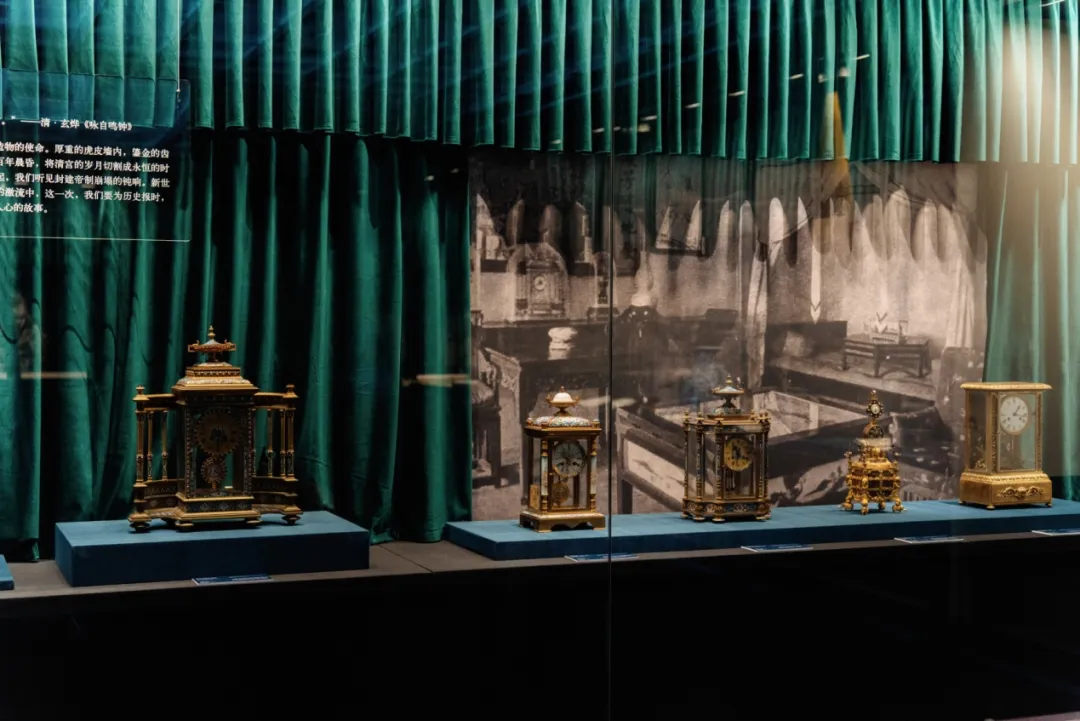
In August, the Summer Palace not only offers boundless lotus pond scenery, but also a cultural relic exhibition that tells the story of the protection of national treasures.
The Paper learned that "Garden Stories VII - The Sustainability of the Migration of National Treasures from South to North" was recently opened to the public at the Beijing Summer Palace Museum and the Dehe Garden Theater . This exhibition focuses on the magnificent history of the protection of national treasures from 1933 to 1951. Through 160 pieces/sets of precious cultural relics that have experienced the baptism of war and returned thousands of miles away, it tells the story of the national treasures' migration from south to north for the first time in an innovative way of "cultural relics self-narration", and recreates the glorious years when a generation of cultural and museum workers protected the roots of Chinese civilization.

Exhibition site
"The southward migration of cultural relics was an unprecedented feat for the Chinese nation to safeguard the roots of Chinese civilization during the flames of the War of Resistance Against Japanese Aggression," said Rong Hua, Deputy Director of the Summer Palace, describing this cultural Long March that spanned 18 years and thousands of miles. "At that time, cultural relics from numerous institutions, including the Palace Museum, the Summer Palace, the Antiquities Exhibition Hall, the History Museum, the Xiannongtan Temple, and the Peking Library, were forced to embark on the journey south to escape the war. This migration can be described as a spiritual Long March to safeguard Chinese civilization. This spirit was not only a lofty belief in safeguarding the legacy of civilization during wartime, but also the soul of contemporary cultural heritage protection."

Ancient jade artifacts on display
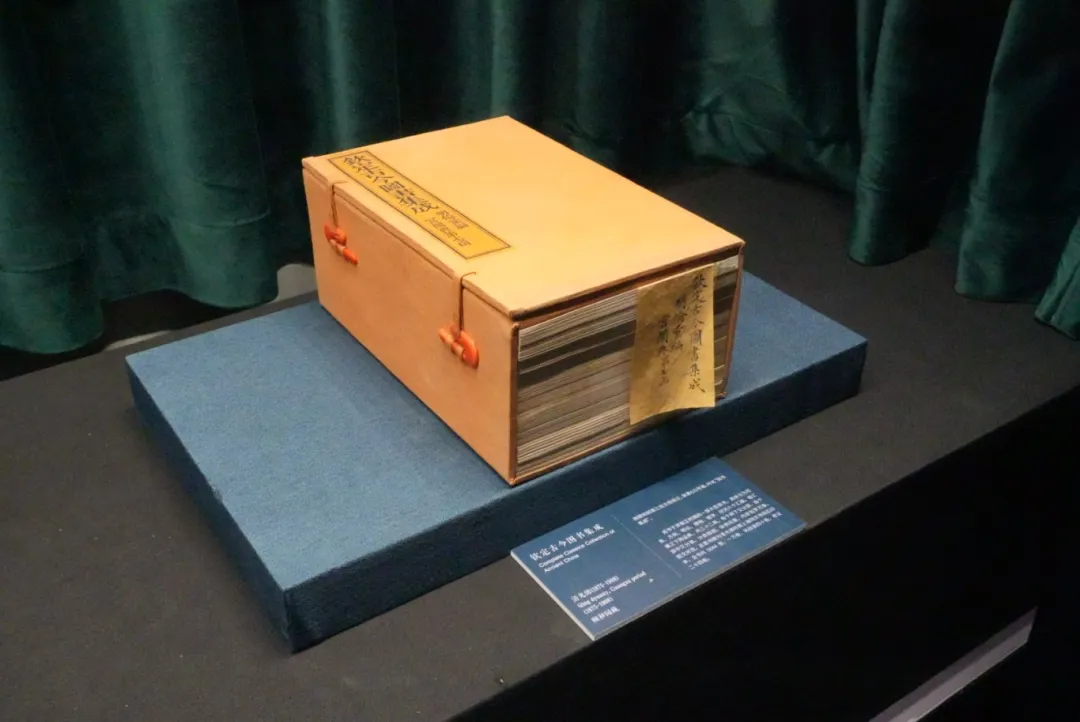
Exhibition of classics
The September 18th Incident of 1931 shook Tianjin and Beijing, threatening the safety of Peking's cultural relics. The Nationalist government then proposed relocating these treasures to southern China for safekeeping, a move known as the "Southward Migration of National Treasures." In the autumn of 1932, the Palace Museum began selecting and packaging the artifacts by category. From March to May 1933, the Summer Palace's artifacts were transferred southward in three batches, along with the Palace Museum's national treasures.
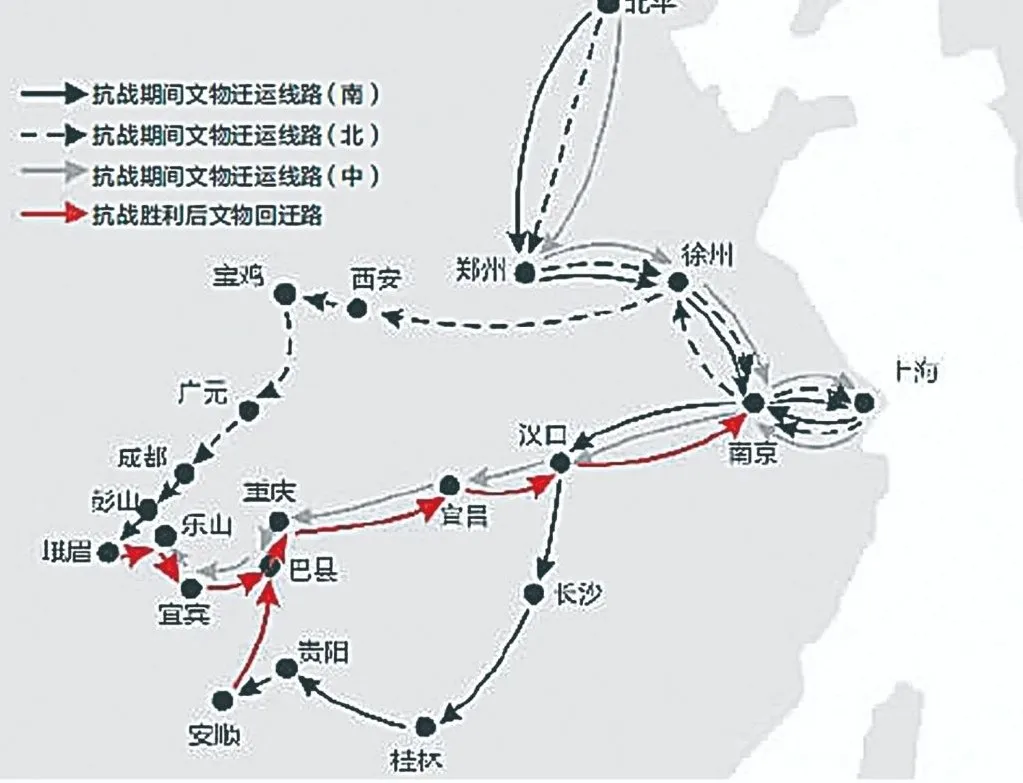
National Treasures Southward Migration Route Map

In 1933, the third batch of cultural relics gathered at Taihemen Square waiting to be dispatched. (Image source: Internet)
According to the organizers, this exhibition cleverly uses "clocks" as a medium to lead the audience through the "self-narration" of cultural relics and the restoration of historical scenes, allowing them to travel through time and space and experience the long march of cultural protection that spanned eighteen years and thousands of miles.
In the West Side Hall exhibition hall of the Summer Palace Museum, a French 19th-century gilded copper enamel surround clock is used with projection equipment to display clocks and heart rate animations on the wall. The heartbeat and the second hand resonate at the same frequency, giving life to the cultural relic.
The museum's atrium features a moon phase installation, depicting the waxing and waning of the moon, symbolizing the journey of cultural relics from their separation to their eventual return home. Multiple perspective windows surround the installation, allowing visitors to observe the moon's gradual waxing from various angles.
According to organizers, the "Garden Stories VII" exhibition features four sections, depicting a magnificent epic of cultural relic preservation. Three sections, "The Old Palace Reborn," "The Journey Through War," and "Dreams of Hometown Return," are on display at the Summer Palace Museum, focusing on the detailed process of the Summer Palace's cultural relics' migration from south to north. The fourth section, "Revisiting the Migration to the South," is located in the Dehe Garden's opera house, showcasing the entire historical journey of the cultural relics' migration from south to north.
The exhibition hall's overall atmosphere evokes a theatrical stage, creating a sense of drama and narrative through the use of multiple layers of "curtains." The artifacts within the display cases, like the "protagonists" on stage, narrate the historical changes they bear witness to amidst carefully designed light and shadow effects.
The museum's screen wall area vividly recreates the historical scene of "1933 Cultural Relics Loading": row carts, nailed wooden boxes and figure sculptures recreate the tense moment of rushing to transport cultural relics in Beijing late at night.
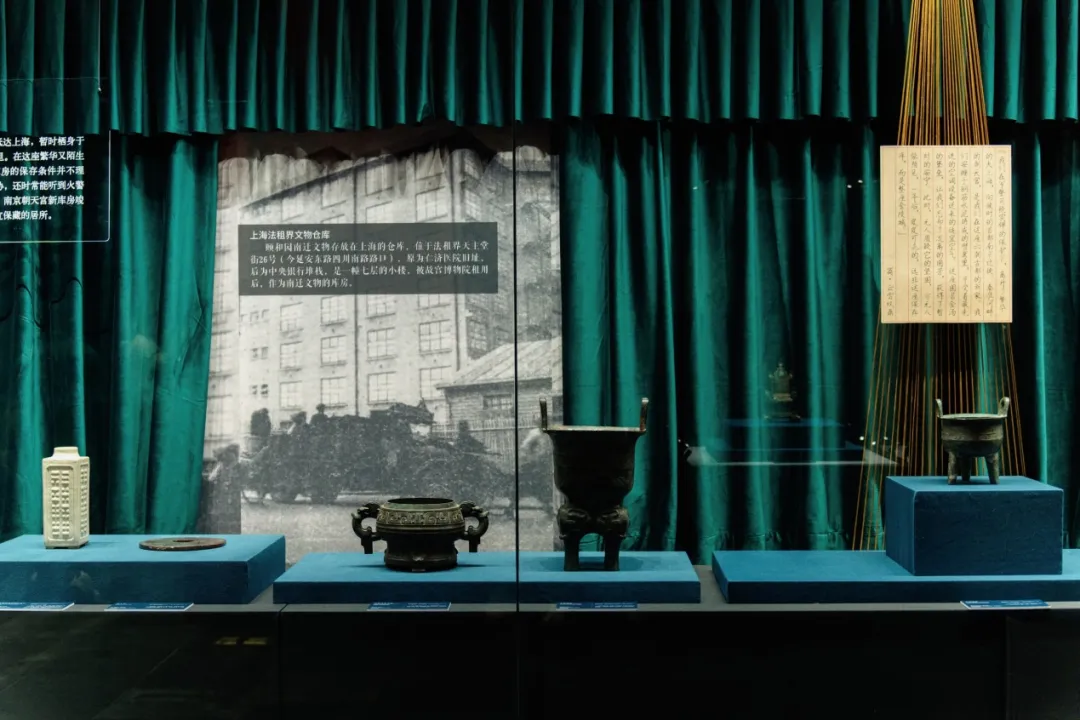
Exhibition site
Key migration nodes such as Beijing-Shanghai-Nanjing-Chongqing are clearly marked on the background wall. Visitors can transform themselves into "cultural relics escorts" here and experience that urgent historical moment through interactive photography.
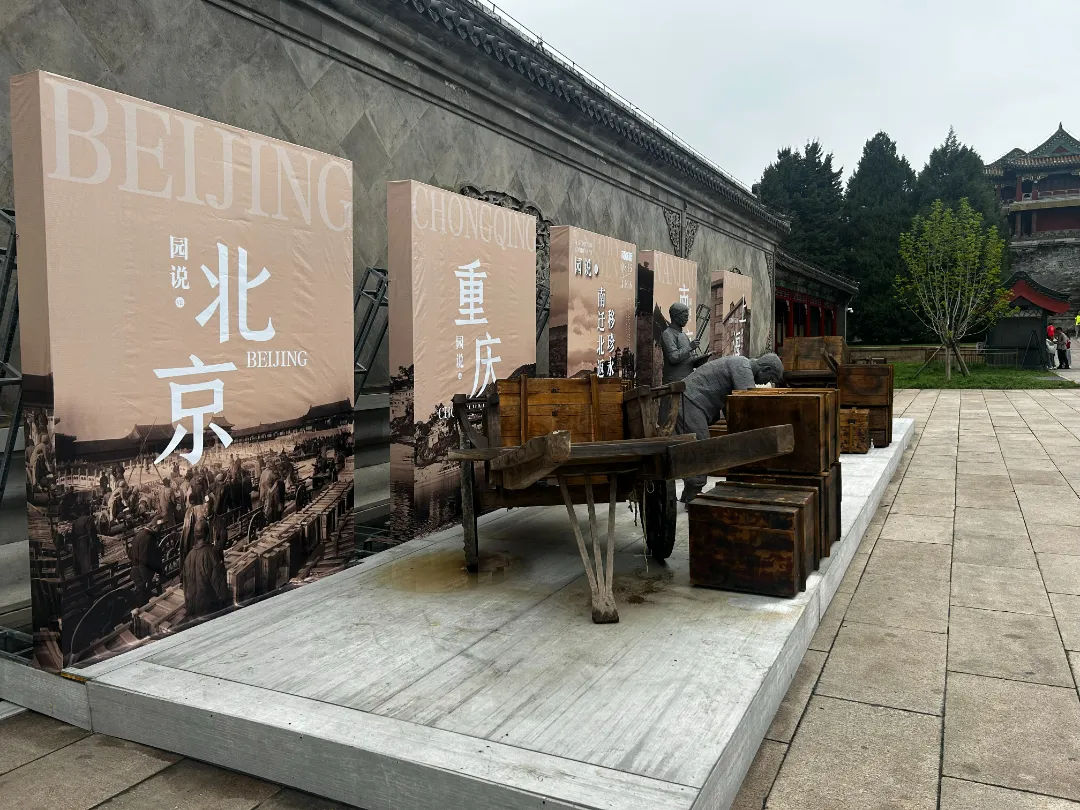
Key migration nodes such as Beijing-Shanghai-Nanjing-Chongqing are clearly marked on the background wall.
The curatorial team also carefully produced a micro-documentary titled "Return to the Southward Migration Route", in which the camera follows them as they visit key sites of the southward migration of cultural relics, such as the former site of the warehouse in the French Concession in Shanghai, the former site of Anderson & Co. in Chongqing, and the Angu Ancestral Hall in Leshan.
In the display cabinets, the Langyao red Guanyin statue from the Qing Dynasty, the blue and white alum red sea dragon pattern plate from the Kangxi period of the Qing Dynasty, various types of mountain statues and colored glaze porcelain are quietly displayed. Behind each cultural relic is engraved the guardian's oath to "live and die with the national treasure."
These precious artifacts, having survived the ravages of war, are now safely displayed in display cases, telling the audience about their extraordinary journey. Ms. Li, who brought her children to the exhibition, said with emotion, "Seeing these national treasures that have survived such devastation, my children and I were deeply moved. It's truly remarkable how these artifacts have been preserved!"
According to historical records, 2,445 cultural relics from the Summer Palace were relocated southward, including a copy of the Complete Works of Books, totaling 528 boxes. In the 1950s, 368 cultural relics were returned northward, representing only about 15% of the total number of artifacts initially relocated southward. These artifacts primarily consisted of porcelain, jade, and bronze artifacts, as well as some furniture and furnishings. This collection of artifacts became the core of the Summer Palace's collection.
Cultural relics, weathered by vicissitudes, quietly tell the story. When the clocks of the Summer Palace start ticking again, and the red glaze of the Langyao kiln regains its brilliance, the solemn promise of "people live, cultural relics live" remains moving.
The exhibition will run until November 16th.
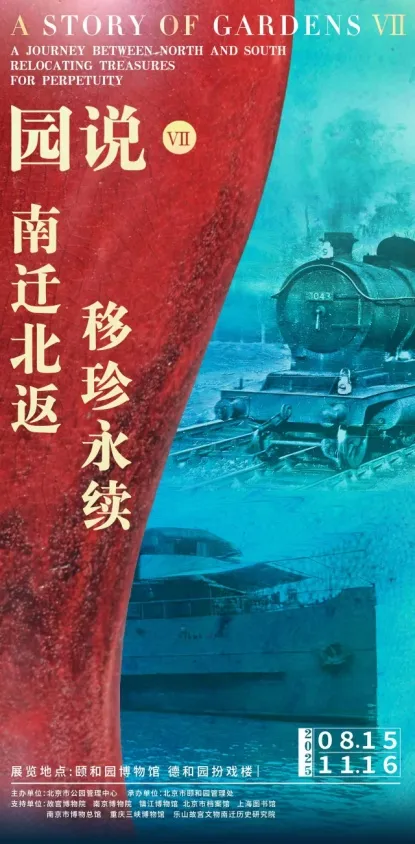
Exhibition poster
(Note: Some of the text and images in this article are based on the Summer Palace)

